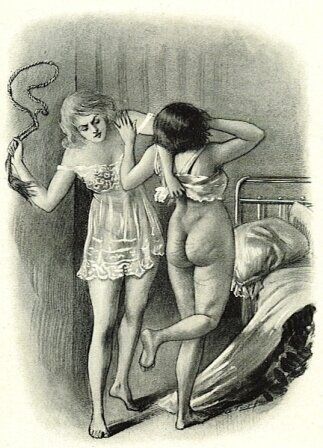I recently read a fascinating article by John Seed, cleverly entitled 'An Alluring Woman with Fries and McDonaldization in Art'. Among other things, John noted that a McDonaldised culture - one that focuses on efficiency and so becomes predictable - may be upon us. That got me thinking; hasn't that always been the case? I hear so many complaints about the pitiful state of our (pop) culture, about the lamentable non-quality - or even non-existence - of art as a real social value. But, at least in literature, this is hardly news.
A century and a half ago, the publishing industry prospered with the ingenious - and utterly genius - 'invention' of poor quality pulp fiction and dime novels. Various authors, ranging from professional to highly dubious, or even fictitious, published on a mass scale. What did they publish? Cheap, trashy romance, of course. Leaving quality aside, these novels sold, sold, and sold at prices that made them totally disposable; alongside them, more ambitious titles such as Jane Eyre or Pride and Prejudice were also being printed - but for more money.
And, let's face it, money matters, in pop culture and in high art. It matters especially to publishers, the most successful of whom have been setting trends and making huge profits on popular bestsellers - in other words, books that sell well. The dime novels of Victorian times sold well because they cost next to nothing. Amazon's e-books sell well because they cost even less - and sometimes nothing at all. In a way, low prices sway the direction of pop culture. Because in terms of content, there's no big difference between the Victorian Married for her Beauty and the 2013 Beauty and the Billionaire; they are both tales of somewhat victimised, Cinderella-like young women who find themselves at existential and romantic crossroads. What they do share, however, is immense popularity and extreme affordability. As Erin A. Smith, professor of American popular literature at the University of Texas at Dallas notes, pulp fiction speaks to base emotions rather than sophisticated cognitive processes. Us simple humans still have those, and we still find those books appealing. Especially because the prospect of saving money also appeals to our base emotions.


So if the price tag and the story remain the same, what - if anything - has changed in the world of literary pop culture? Apart from a few steps forward in the world of technology, wider access to texts in general and higher literacy rates, not much. Oh, right, and there's the new genre of dinosaur erotica, of course, which I don't think existed back then (but please correct me if I'm wrong). Today's trashy romance is the Victorian era's trashy romance, in different packaging and without the Jurrasic nuance.
Another thing that changed, quite clearly, is that today's pop culture is a digital one. Personally, I don't own a TV. But I do have an ultra fast Internet connection, preferring the speed and choice offered by YouTube. At the same time, I hate the very concept of the e-book - with a passion. And, at the same time, I work for an online platform that promotes art and culture. Somehow, this bunch of seeming contradictions doesn't bother me. I really, deeply believe that there are things happening independently of me (revelation indeed) and while I can keep piling up my precious little paperbacks, the world is switching to a new medium for an experience of pop culture. What this tells me is that, indeed, as John Seed put it, popular fiction is as BigMacked, McDonaldised and SuperSized as it gets. It always was. It's cheap, its quantity is unrestricted and it's very, very juicy. In a delightful twist of fate, you can even buy a trashy Victorian romance in e-book format on Amazon!
My suggestion is that we stop dramatising things and face the facts: pop culture, be it truly pop like today's cheap erotica, or only pretend pop like pop art, is and always has been part of our collective understanding of culture as a whole. Some may not agree, some will deny that pop culture has anything to do with 'real' art and literature - but I say they're looking at it all wrong. Embrace pop culture, embrace the flowers of E. L. James' inspired loins just as you enjoyed D. H. Laurence's hot and steamy Lady Chatterley's Lover. And most of all, embrace the Internet.
(I still like my Nabovok served on that wonderful concoction of paper and ink.)